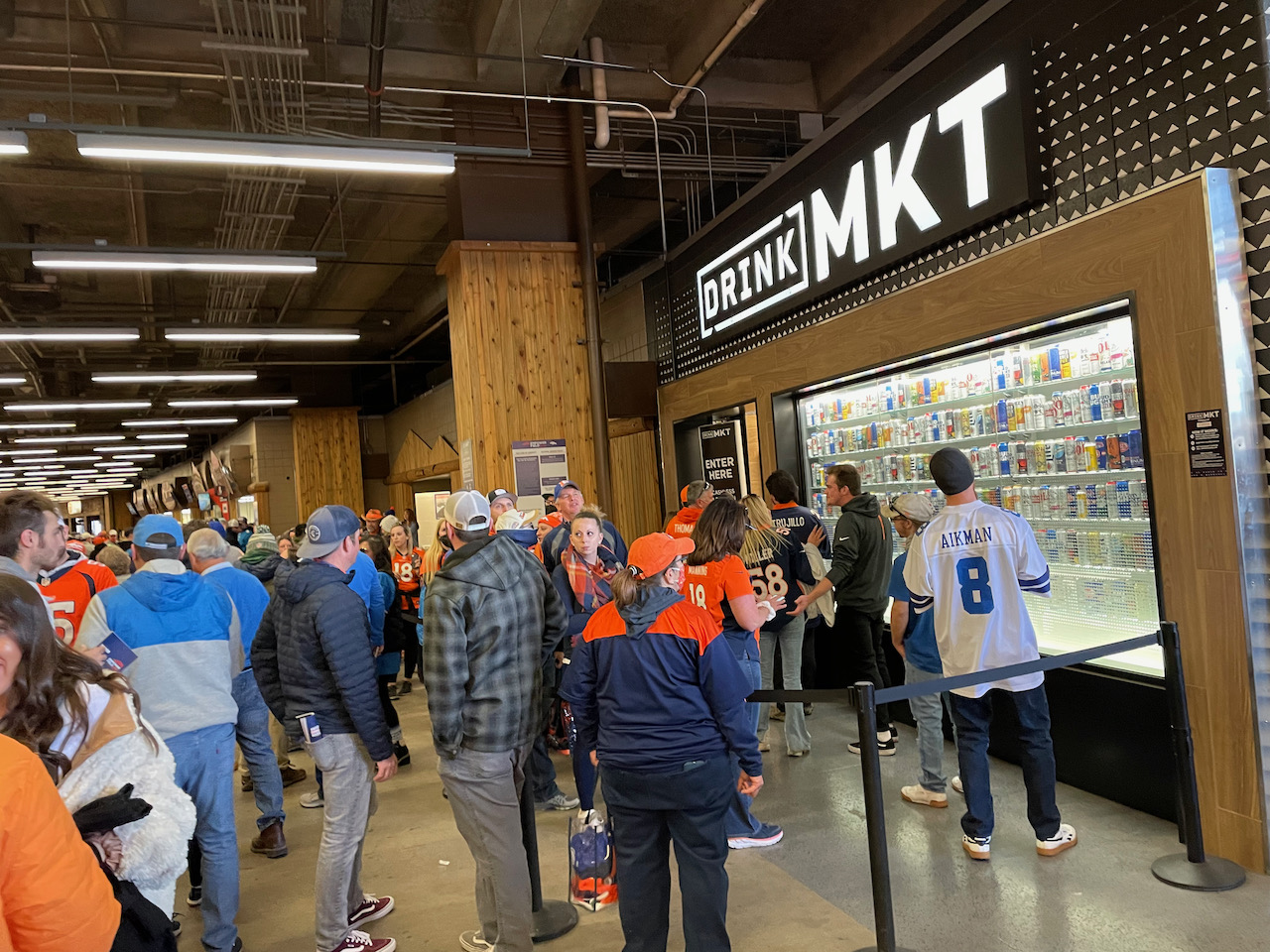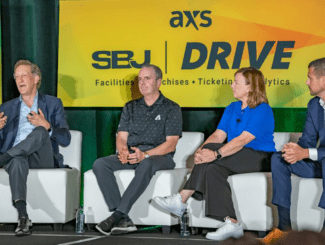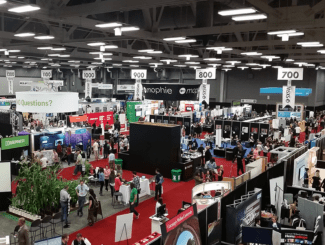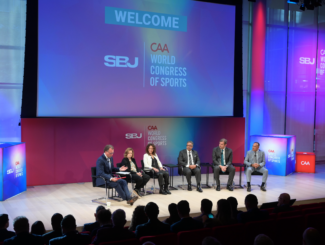Even before they traded for star quarterback Russell Wilson this offseason, the Denver Broncos have been taking care of their fans at Empower Field at Mile High, especially when it comes to concessions operations.
By addressing years-old concessions problems with new technologies and new ideas of how to get food and drink into fans’ hands (and stomachs) much faster, the Broncos are cutting down standing-in-line time while also adding to their business bottom line. Starting with the highest number of checkout-free stands in any stadium anywhere and by also adding in self-serve kiosks and optical-scanning checkout terminals, the Broncos and catering partner Aramark are leading the way in big-stadium concessions revolutions, with more to come.
While the Broncos and Aramark had tested some of the new concessions technology ideas before the Covid pandemic reduced crowd sizes, for the 2021 NFL season the caterer and the team went large with innovation. According to Aramark, that technology infusion helped Empower Field at Mile High record the highest transaction rate per attendee of the 11 NFL stadiums where Aramark handles food and beverage service.
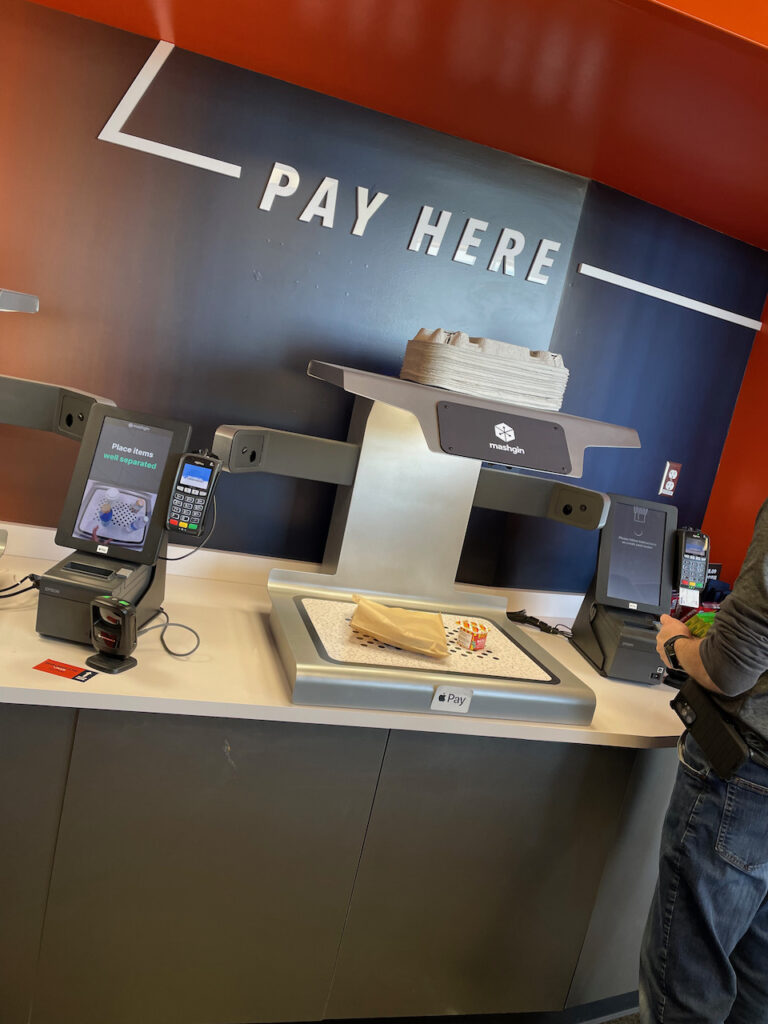
For 2021, Empower Field at Mile High had nine checkout-free stands, which use pre-visit payment information (collected either via an app or a credit-card swipe before entry) and a combination of in-store recognition technology — a mix of cameras, weight sensors and artificial intelligence software — to “see” what customers are taking off the shelves, and to digitally charge the customers for those items as they leave the store. The stores, powered by technology from a Silicon Valley startup named Zippin, proved to be very popular with Broncos fans, as Stadium Tech Report can attest from a December visit to the venue, where all the Zippin stores we saw had lines of fans waiting to get in.
The Broncos and Aramark have also implemented several other line-speeding technologies, including a combination of self-ordering kiosks and pickup windows, much like what is used at fast-food outlets in shopping malls and airports. According to Aramark there are 10 such stands at Empower Field at Mile High, including ones that only serve chicken-tender products and another that serves tacos.
A technology concept that offers a wider range of popular “grab and go” items, including pizza, popcorn, nachos and hot dogs, uses an optical-scanner checkout terminal from Mashgin. The autonomous scanner “sees” a customer’s order when placed on the terminal platform and instantly totals up the bill, which is paid via a credit-card reader. According to Aramark there are six stands at the stadium using the Mashgin checkout systems.
In all, more than a third of all the built-in concessions stands at the venue use some kind of new technology, including the ability to order concessions via a mobile app for express pickup at certain stand windows. According to Aramark, the concessions upgrades deployed at Empower Field at Mile High during the 2021 NFL season resulted in a 42 percent increase in transactions during peak concessions sales periods, as well as an increase in overall sales per game. And while Aramark didn’t provide any statistics on staffing, the new technologies and procedures can clearly result in a reduced number of concessions workers needed for mundane tasks like cash register operations, since many of those tasks are basically eliminated.
No time for checkouts
Editor’s note: This post is from our Stadium Tech Report Spring 2022 issue, which you can read online, or download a PDF of the full report.
If you haven’t heard of or seen a checkout-free stand, you probably will soon. There may be no recent concessions tech advancement more perfectly suited for stadiums than the systems that allow fans to use a credit card, app or other pre-registration system, then to just walk into a stand or store, select items, and leave. with billing taking place in the electronic background. There’s almost zero human interaction needed, other than (at stadiums) for a staffer to check IDs and one to make sure your alcohol can or bottle is opened before you go back to your seat.
“If you put in one [store], it becomes the place people want to go,” Jacobus said.
When you visit such a stand for the first time, it may be hard to believe it works, but the systems clearly work well enough that caterers, teams and fans are buying in as fast as they can. There are already several different tech providers competing in the space, including big gorilla Amazon, which recently unveiled a full-size Whole Foods store using the system in Washington, D.C. Amazon Just Walk Out stores are also at Climate Pledge Arena in Seattle, TD Garden in Boston, the United Center in Chicago, USB Arena and Houston’s Minute Maid Park.
Another Silicon Valley startup, AiFi, has partnered with Verizon to place pop-up stores using similar walk-through technology, with deployments last year at Ford Field in Detroit, Hard Rock Stadium in Miami, at the Indy 500 and at outdoor concerts like BottleRock in Napa Valley.
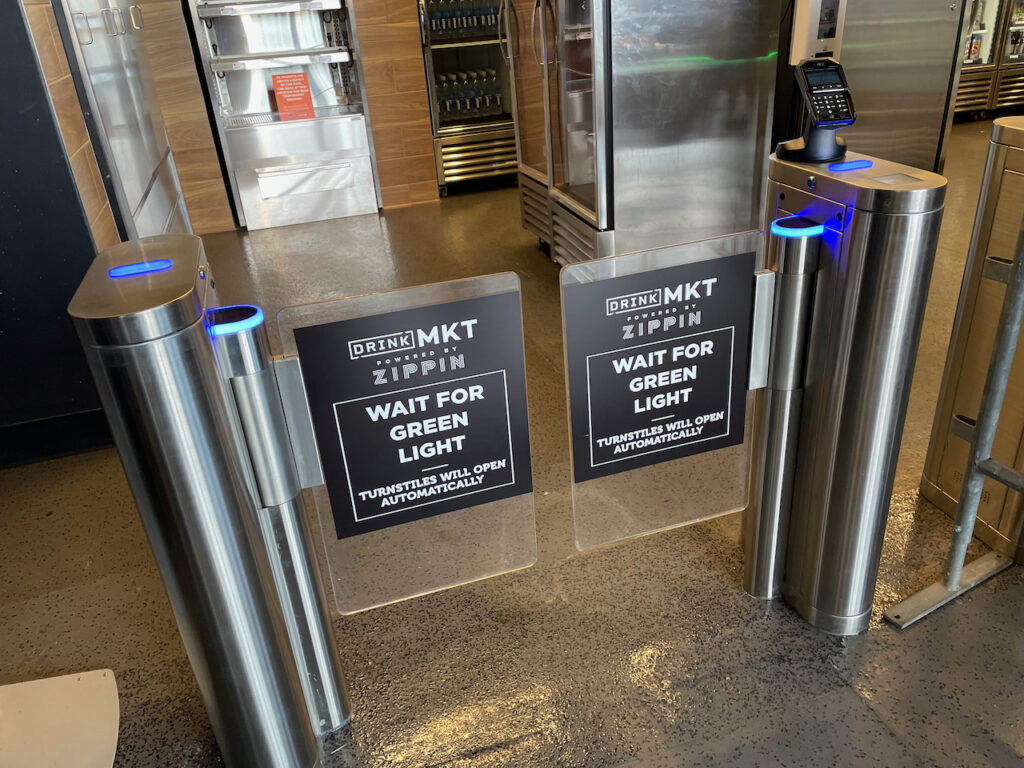
In Denver, Aramark uses Zippin technology to power its nine “Drink Mkt” stands, which mostly sell beverages that fans just pick out of glass-door coolers. The technology is a perfect fit for fans who simply want to get a drink and don’t want to wait in line at a traditional stand behind a dad ordering nachos, burgers and fries and different sodas for the whole family. By combining the walk-through technology with the simple desire to get a can or two, the Drink Mkt stands can service fans in seconds, at least once they get inside the stores.
“There really is no better vertical (for the technology),” than stadiums, said Gary Jacobus, Zippin’s senior vice president for business development, in a phone interview. “There’s a lot of people who need to be served in a short amount of time.”
In fact, as we went around the stadium at the December game it seems like the biggest problem with the Zippin stores is that they are so popular that big lines form outside the entry gates (while Zippin says its technology has no customer limits, in Denver the number of fans inside each store were clearly being limited). Those lines, however, do move quickly, and once fans are inside the stands their average stay there is often a minute or less.
“If you put in one [store], it becomes the place people want to go,” Jacobus said.
If first-timers may wander around a bit and then take a selfie as they leave, from our observations it doesn’t take long for the wonder to wear off and the simple attractiveness of getting something quickly takes over. As we watched fans use the stands, it was clear that there were already “veterans” at the game, whose no-nonsense trips were concluded in a matter of seconds from entry to exit.
According to Jacobus the Drink Mkt stands were configured mainly to “take the drink pressure off other stands,” though he said that some of the stands at Empower Field at Mile High did offer hot food items as well. Stadium Tech Report also saw a “pop-up” style Drink Mkt stand inside a club area, a different configuration than the stands on concourses, which are built into the stadium infrastructure.
One of the biggest costs of putting in a Zippin stand (Aramark declined to reveal the price of a reconfiguration) is installing the overhead cameras and the sensors, which require some network and server infrastructure as well. So the pop-up stands, which have their own overhead infrastructure, could be a faster and cheaper way to install more Zippin stands.
Kiosks and grab-and-go with optical checkouts
If the Zippin-type stores are a bigger cost investment, in Denver Aramark and the Broncos have found other ways to add simpler technology that also speeds up the ordering procedure. An early test of self-ordering kiosks, which are fairly common at fast-food restaurants in malls and airport, expanded to 10 stands for this past season, according to Aramark. At these stands fans simply order and pay at a bank of touchscreen kiosks and then wait until their order number appears on a screen at an adjacent window. From a Covid standpoint, such stands have been very helpful since you don’t have to be in a line as you wait. But even as virus concerns wind down, the kiosk setup seems to be a better use of space and people’s personal space; and like the Zippin stores, by taking away the need for staffers to take orders it allows the operators to have more flexibility in how staff are deployed.
Technology also plays a role in the stadium’s six “grab and go” stands, where a selection of popular items, like pizza, popcorn, peanuts and hot dogs are offered in prepackaged boxes on shelves that face an open line flow. At these stands fans “grab” what they want and then go to the innovative Mashgin terminals, where they simply place their items on the terminal’s pad where they are scanned by cameras. The terminal then totals the order, which fans pay via credit card scanner. Like the Zippin stands, the only staff needed is to check IDs and ensure alcohol cans and bottles are opened. Seattle’s Climate Pledge Arena also went large with self-scanning terminals, though the ones they use from Toshiba use standard bar codes.
Neighborhood concept brings the club experience to the concourse
In another experiment the Broncos and Aramark have built something that is both technology and process: An innovative area that combines outposts of three local restaurants built around a common ordering and eating area that has stand-up drink rails and sit-down tables. A renovated former storage space adds in two stand-up bars and more seating areas, bringing club-like amenities to the main concourse, a trial that was extremely popular on the day of our visit.
Known by the forgettable corporate official name of “Downtown Mile High at Empower Field at Mile High,” the trick of making the plan work revolves around a bank of 16 touchscreen kiosks and a mobile app that lets fans order from any of the three stands at the same time. Then when orders are ready the order numbers are displayed on digital screens, and fans go to the individual store windows to pick up their food.
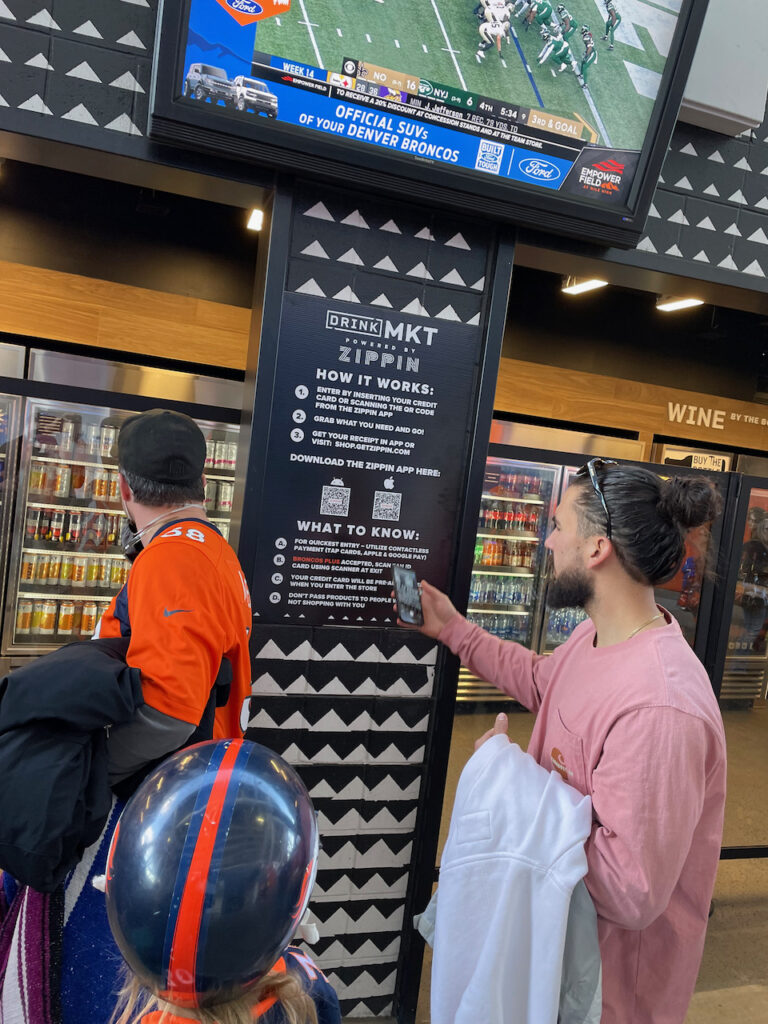
With the wide number of ordering options and by not allowing fans to stand at each of the windows to order, lines are basically eliminated. Self-serve soda fountains in the middle common area also help with streamlined service and more choices. Fans can then enjoy the comfort of eating in a more normal way than in a stadium seat, and can socialize with other fans who may not be seated near them inside the seating bowl.
The popular local restaurants — the burger-and-beer menu from Cherry Cricket, casual Italian from Osteria Marco and “Modern Mexican street food” from Tacos Tequila Whiskey — also give all attendees an upscale dining option, the kind you might only typically find in stadium club areas.
According to Alicia Woznicki, vice president of design and development for Aramark Sports and Entertainment, the “Downtown” area repurposed the infrastructure of three previous standard concession stands, including the kitchens used to supply those stands. But what really makes the system interesting is how it is configured for ordering and pickup, taking the self-order single stand idea another step ahead.
“The unique ability to order from three distinct, local concepts all in one transaction is a main highlight of the space,” Woznicki said in an email exchange, saying the experiment was the first of its kind for the caterer.
Around the back of the food ordering area, the bar space consists of two large bars, which have multiple TV screens for watching game action, and seating and stand-up rails. The bar areas, which back up against a walkway ramp, were previously used for storage, Woznicki said.
Faster is better
Empower Field at Mile High also saw new concessions technology of a different sort being trialed last season — this one a “self-pouring” beer tap that let fans put an empty cup on a machine that tilts the cup as the beer flows in, resulting in just the right amount of foam.
“Based on the overwhelmingly positive reaction from guests, the plan is to roll out more [Speed Pass stands] in the future,” Woznicki said.
Called the “Bud Light Speed Pass,” the stand featured several different taps of beer that fans could choose from. Fans could return for multiple fill-ups, without having to pay after the first time. While some might question the quantity and pricing of the offer — $30 for three 24-ounce beers, the equivalent of a standard six-pack — fans we watched using the service seemed to have fun with the pouring machines and clearly were happy with the speed of the service, with no bartenders to get in the way.
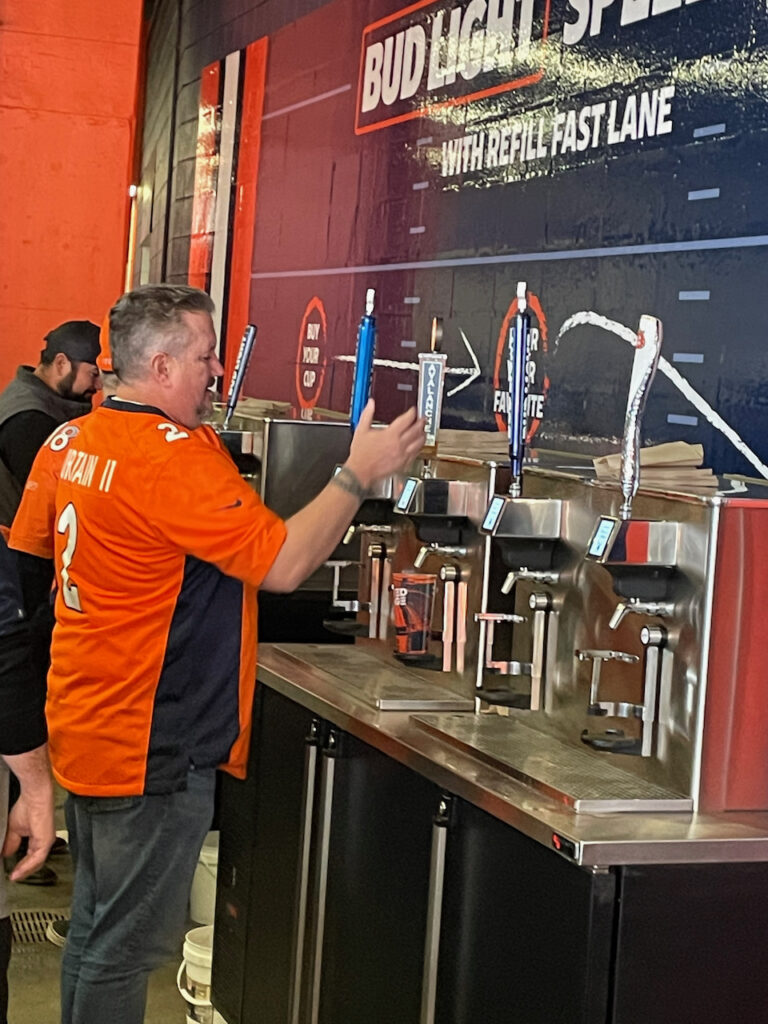
“Based on the overwhelmingly positive reaction from guests, the plan is to roll out more [Speed Pass stands] in the future,” Woznicki said.
Providing food and drink for fans while they are attending events has always been a challenge for large venues, and the larger the venues are, the harder the task is. Anyone alive today who’s been to games or concerts in their lifetime most likely has at least one bad remembrance of an instance when it took an overly long time to get concessions — an entire baseball inning, or half a football quarter — and would gladly try something new if it meant less time spent in lines. That means that ideas like self-order kiosks, grab-and-go stands, and checkout-free systems will probably become more prevalent as more teams follow the path blazed by the Broncos and Aramark. “For every [fan] survey we ever did with Aramark, speed of [concessions] service was always at the top,” said Zippin’s Jacobus. “This technology is here to stay.”



